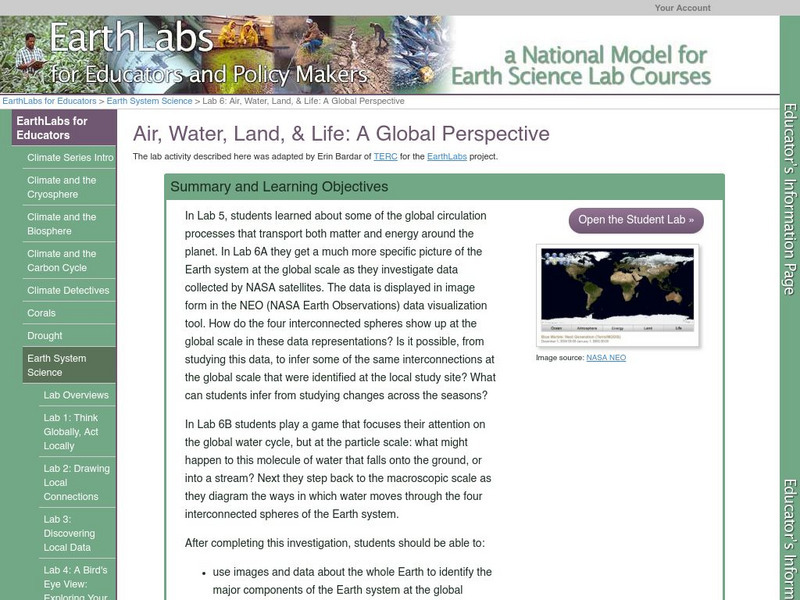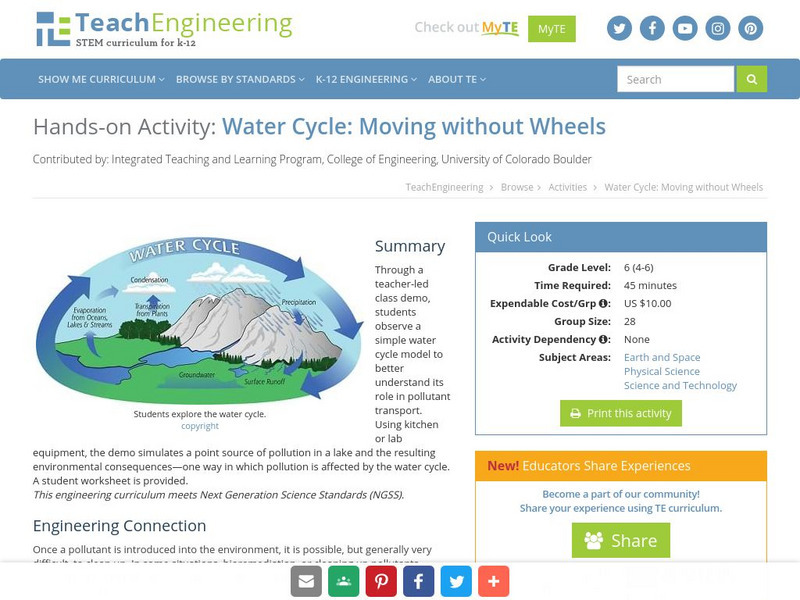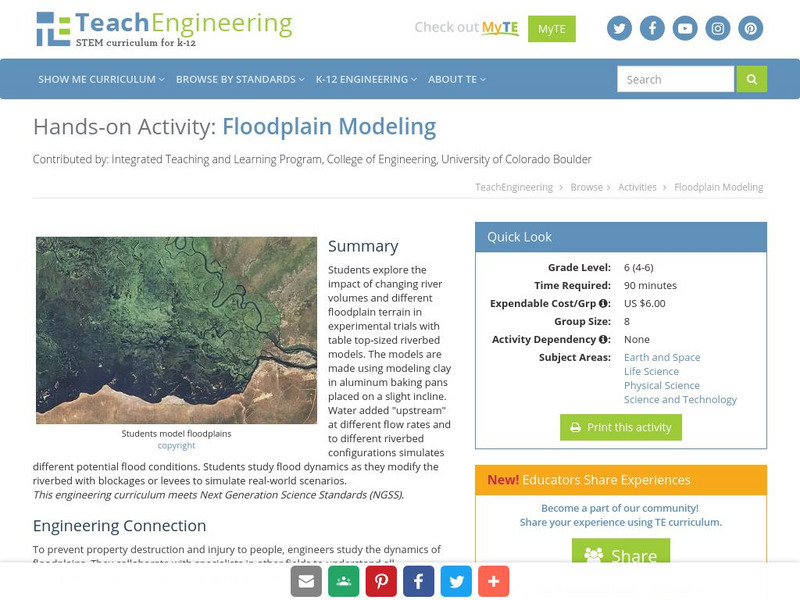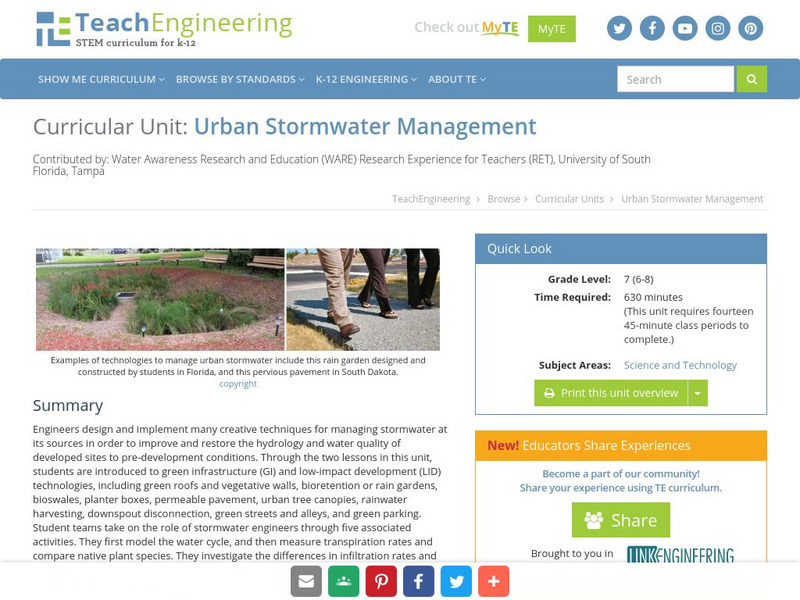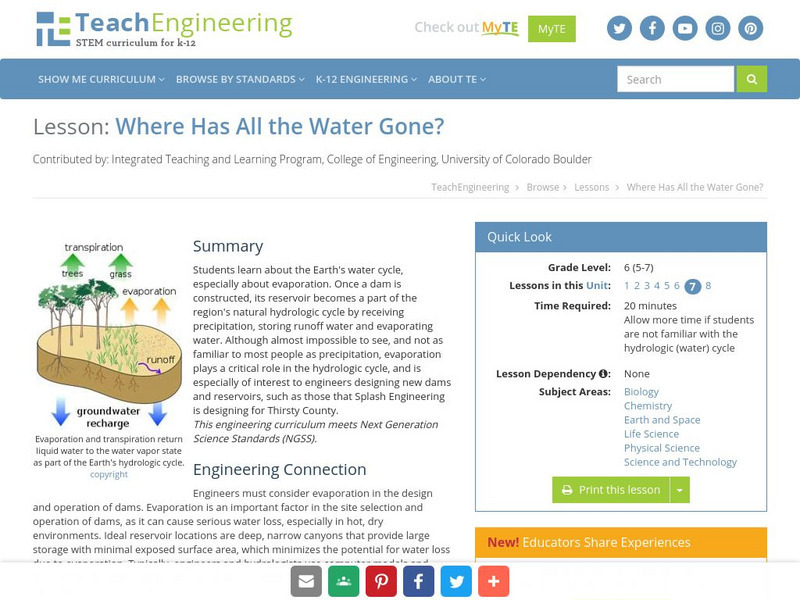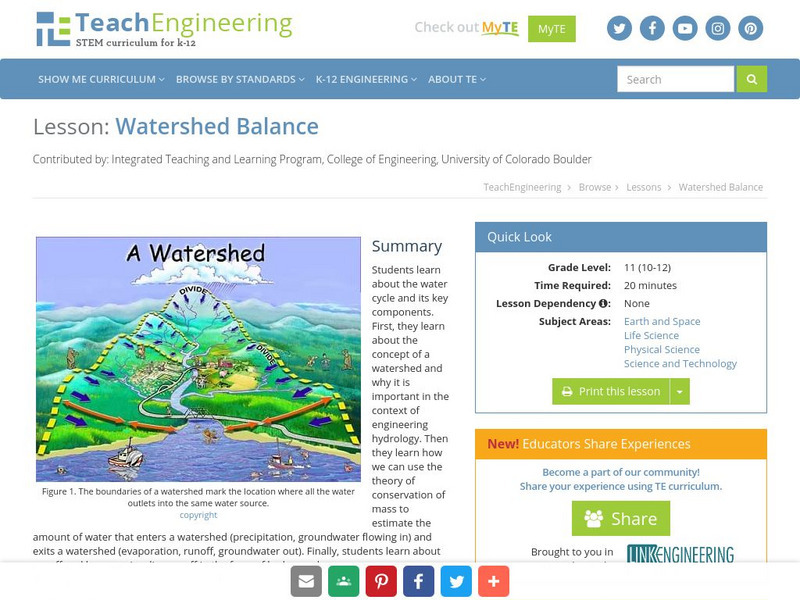PBS
Teaching Bhutan: The Water Cycle & Bhutan
Interactive science lesson plan that teaches students about the water cycle in relation to mountain ranges and monsoons common in Bhutan. Make a cloud in a bottle!
NASA
Nasa: Introduction to Clouds [Pdf]
NASA is interested in clouds because they are an integral part of the water cycle, and because they are a controlling factor in the energy budget of the Earth. This chart provides a basic introduction to the identification of clouds. The...
PBS
Pbs Learning Media: One Year in the Life of Earth
Watch the earth from one million miles away! NASA's camera captured these images showing the majority of the earth's surface is water. View a narrated or unnarrated video of these images. Background information, teaching tips, and a...
PBS
Pbs Learning Media: The Sun and the Water Cycle
Learn about the water cycle through the adventures of two sisters. They will explain how the sun powers the water cycle and describe the different states of water. A glossary and labeled illustrations accompany the video. For the...
Other
The Journey of Water
This interactive tour helps you to understand the journey of water to the springs. Learn about the water cycle and the Florida aquifer, supporting springs and the residents of Florida and how their activities impact the quality and...
US Geological Survey
Usgs: The Usgs Water Science School
Use this site as a resource to learn about the many aspects of water.
US Geological Survey
Usgs: Water Cycle for Schools
The U.S. Geological Survey (USGS) and the Food and Agriculture Organization of the United Nations (FAO) have teamed up to create a water-cycle diagram for schools. Use the interactive version and download printable files of the diagram.
Globe
The Globe Program: Discoveries at Willow Creek [Pdf]
Join Anita, Dennis and Simon as they take a field trip to Willow Creek. This visit to the creek is slightly different than their first encounter there--discover why by reading this interesting tale!
NOAA
Noaa: Research: The Water Cycle
U.S. Department of Commerce, National Oceanic & Atmospheric Administration, NOAA Research provides a student document with real life examples and explanations of the water cycle. Students then create, observe, and anaylze their own.
National Geographic
National Geographic: Water Availability in the u.s.
In this lesson plan, students use National Geographic FieldScope to investigate patterns of water availability and precipitation in the United States.
NOAA
Noaa: The Ocean's Role in Weather and Climate
A collection of resources - interactive activities and teacher tutorials - on the impact the ocean has on weather and climate.
Science Education Resource Center at Carleton College
Serc: Lab 6: Air, Water, Land, & Life: A Global Perspective
An investigation that is part of a series of lab lessons that expose students to Earth Systems through research, data, and visualizations. In this lab, students will follow the pathway of water on a big scale and a small scale down to...
Georgia Department of Education
Ga Virtual Learning: Water and Wind
This interactive tutorial discusses the flow of water on the surface and below the surface. You will learn about the causes and actions of wind, and how water and wind move sediment.
NASA
Nasa: Oceanography
Join NASA in its study of oceanography and learn about the Earth system, the physical ocean, and life in the ocean. Try out the Giovanni: Earth Data Visualization Tool and access satellite-derived data to enhance the learning experience.
TeachEngineering
Teach Engineering: Moving Without Wheels
In a class demonstration, students observe a simple water cycle model to better understand its role in pollutant transport. This activity shows one way in which pollution is affected by the water cycle; it simulates a point source of...
TeachEngineering
Teach Engineering: Witnessing Evaporation
The engineers at Splash Engineering (the students) have been commissioned by Thirsty County to conduct a study of evaporation and transpiration in their region. During one week, students observe and measure (by weight) the ongoing...
TeachEngineering
Teach Engineering: Floodplain Modeling
Students explore the impact of changing river volumes and different floodplain terrain in experimental trials with table top-sized riverbed models. The models are made using modeling clay in aluminum baking pans placed on a slight...
TeachEngineering
Teach Engineering: Natural and Urban "Stormwater" Water Cycle Models
Students apply their understanding of the natural water cycle and the urban stormwater water cycle, as well as the processes involved in both cycles to hypothesize how the flow of water is affected by altering precipitation.
TeachEngineering
Teach Engineering: A Guide to Rain Garden Construction
Student groups create personal rain gardens planted with native species to provide a green infrastructure and low-impact development technology solution for areas with poor drainage that often flood during storm events.
TeachEngineering
Teach Engineering: Urban Stormwater Management
Through the two lessons in this unit, students are introduced to green infrastructure and low-impact development technologies. Student teams take on the role of stormwater engineers through five associated activities.
TeachEngineering
Teach Engineering: Where Has All the Water Gone?
Young scholars learn about the Earth's water cycle, especially about evaporation. Once a dam is constructed, its reservoir becomes a part of the region's natural hydrologic cycle by receiving precipitation, storing runoff water and...
TeachEngineering
Teach Engineering: Watershed Balance
This lesson teaches the concept of a watershed and why it is important in the context of engineering hydrology. Students learn about runoff and how we visualize runoff in the form of hydrographs.
TeachEngineering
Teach Engineering: The Other Water Cycle
For students that have already been introduced to the water cycle, this lesson is intended as a logical follow-up. Students will learn about human impacts on the water cycle that create a pathway for pollutants beginning with urban...
TeachEngineering
Teach Engineering: Natural and Urban Stormwater Water Cycles
Through an overview of the components of the hydrologic cycle and the important roles they play in the design of engineered systems, students' awareness of the world's limited fresh water resources is heightened. The lesson lays the...

![Nasa: Introduction to Clouds [Pdf] Graphic Nasa: Introduction to Clouds [Pdf] Graphic](https://static.lp.lexp.cloud/images/attachment_defaults/resource/large/FPO-knovation.png)



